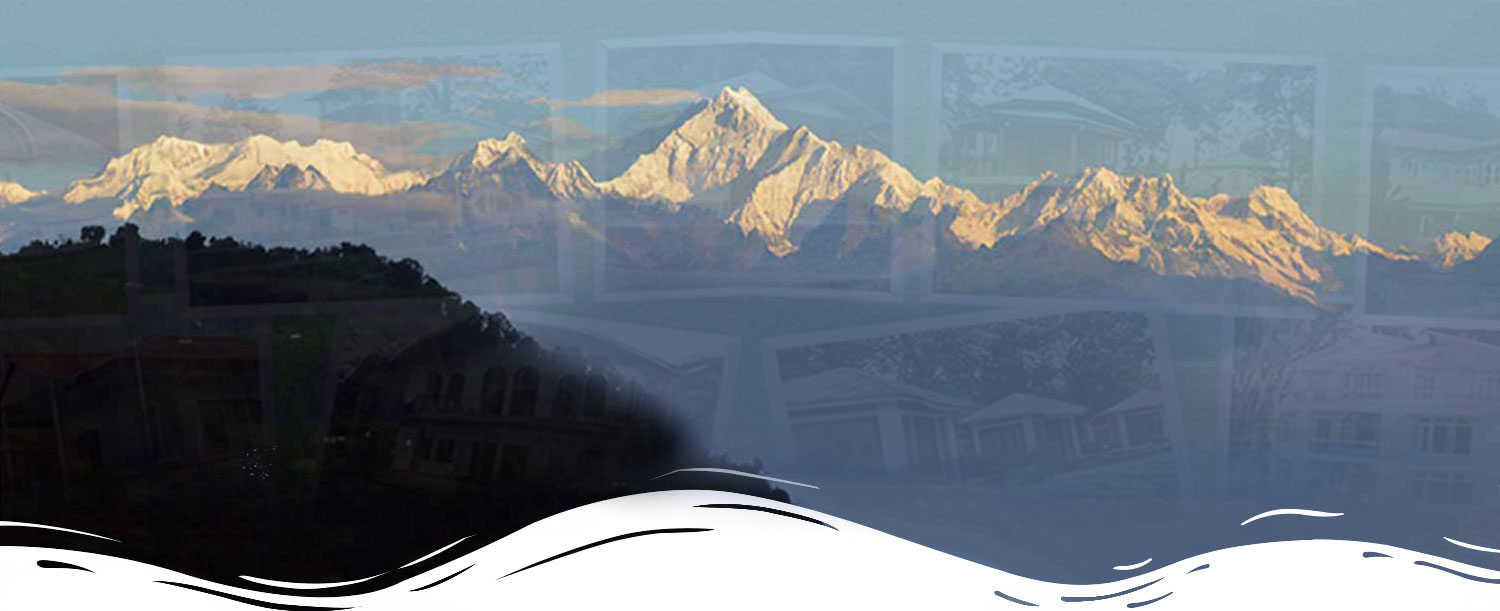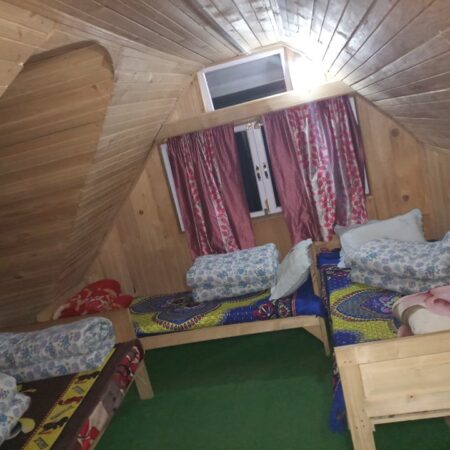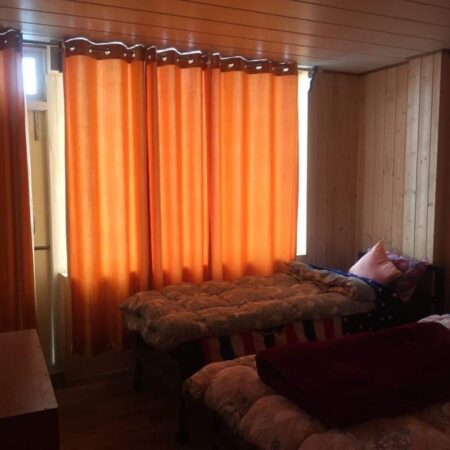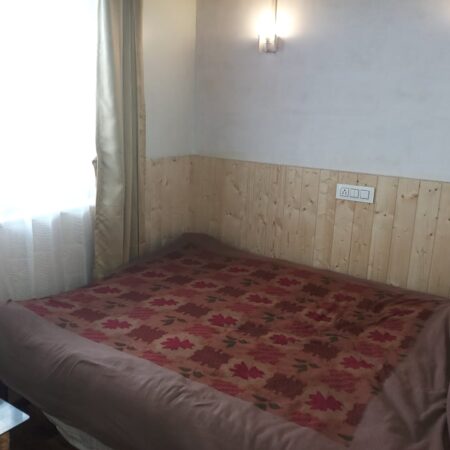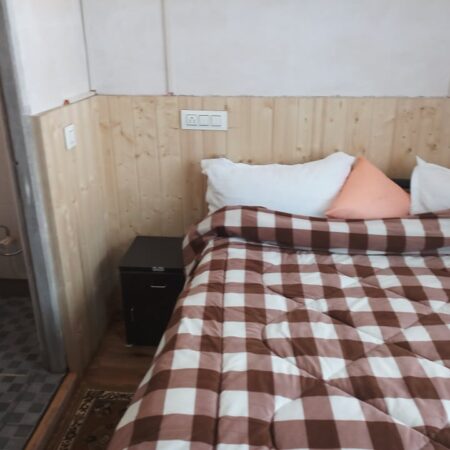Sandakphu Homestay
The Property
Located in a peaceful surrounding, our Homestay has something very homely about it. A valley view Homestay with almost all hotel like amenities. Views from the balcony rooms were awesome.
Service and behaviour of the owner’s family is excellent. Rooms are very neat and clean and also have wifi & geyser. Enjoy tasty home made foods within the package.
Dining space is very big and one can enjoy the mesmerizing views of the mountain valleys from there as well.
Travel Dreams is the official booking agent of Sunrise Hotel and restaurant, Sandakphu. The hotel consists of a three-story new building with a two-story old building adjacent to it. The hotel’s top offers the greatest views of the Eastern Himalayas snow-capped peaks.
The hotel has deluxe rooms with two to seven beds, as well as regular rooms with three beds. Rooms with three beds and a shared bath are also available.
Attractions:
Witness a breathtaking sunrise over a stunning snow-capped range of peaks. Take a stroll through the park. Observe the park’s fauna and flora. Tourists that join the Land Rover excursion can visit Phalut for the day.
The second highest peak in West Bengal, India, is Phalut (3600 m). It is located on the boundary of West Bengal and Sikkim, as well as Nepal, and is part of the Singalila Ridge in the Himalayas. Within the Singalila National Park, it can be found. The Indian army runs a modest bunkhouse near the peak’s summit. Phalut is 17 kilometres away from Singalila Pass.
How to reach Sandakphu
Manevanjan, located 86 kilometres from NJP train station or Bagdogra airport, is the starting point for the Singalila tour. The distance between Manevanjan and Darjeeling is 28 kilometres, and the distance between Manevanjan and Kalimpong is 64 kilometres. Sandakphu is 32 kilometres away.
Land rovers or walking can take you from Manevanjan to Sandakphu. At the Manebhanjan checkpoint, you can rent a Land Rover.
Because of the spectacular views of Kanchenjunga and Everest from the ridge, as well as seasonal wildflower blooming and wildlife, the Singalila Ridge route to Sandakphu and Phalut is one of the most popular in the Eastern Himalayas. Manebhanjan or Dhotrey are good places to start hiking.
About Sandakphu
- What do you believe it is that attracts trekkers from all over the world to the Sandakphu and Singalila treks? The answer is simple: nowhere else can you see four of the world’s five tallest peaks in a single stretch of snow.The Sandakphu summit, also known as the “paradise of nature lovers,” is a vantage point from which one can see four of the world’s five tallest peaks in a continuous snow-covered arc: Everest, Kanchenjunga, Makalu, and Lhotse.Tourists will view the brilliant peaks of the Everest family in Nepal’s far west, including the stunning Mt. Everest, as the sun rises (29,029 ft., the highest peak in the world). Sandakphu is roughly 160 kilometres distant. Other nearby summits are Kabru (24,026 ft), Kumbhakarna (25,294 ft), and Pandim (24,026 ft) (22,010 ft). The Three Sisters peaks are located between Everest and Kanchenjunga. The huge Tibetan peaks of Narsing, Dongkyu, and Chola may be seen east of Kanchenjunga. Then there’s Chamolhari, who may be found in Bhutan.
The tallest peak on Nepal’s Singalila Ridge, which is located in the district of Ilam on the West Bengal-Nepal border, is Sandakphu (3665 m; 11,930 ft). The mountain is situated on the outskirts of the Singalila National Park, with a tiny town and a few hotels on the summit.
A view of the peaks from Sandakphu and Phalut:
Witness one of the most beautiful views, which includes Baruntse (7220m), Chamlang (7319m), Chomo Lonzo (7818m), Lhotse (8516m), Makalu (8462m), Mount Everest (8848m), Nuptse (7861m), Kanchenjunga (8586m), Talung (7349m), Rathong (6679m), Kabru N (7353m), Koktang (6147m (5650m).
Between 2000 and 3600 metres, the Singalila Ridge is covered with dense bamboo, oak, magnolia, and rhododendron forest. The rhododendrons bloom in the spring (March and April), while the lower woodlands bloom in the post-monsoon season (about October) (Primula, Geranium, Saxifraga, Bistort, Senecio, Cotoneaster and numerous orchids).
With over 120 species recorded, the park is a birder’s paradise, with many rare and exotic species such as the Himalayan Vulture, scarlet minivet, kalij pheasant, blood pheasant, satyr tragopan, brown and fulvous parrotbills, rufous-vented tit, and Old World babblers like the fire-tailed myzornis and golden-breasted Many migratory birds use the park as a stopover.
The red panda, leopard cat, barking deer, yellow-throated marten, wild boar, pangolin, and pika are among the tiny mammals found in the Singalila National Park. Among the larger mammals are the Himalayan black bear, leopard, clouded leopard, serow, and takin.

